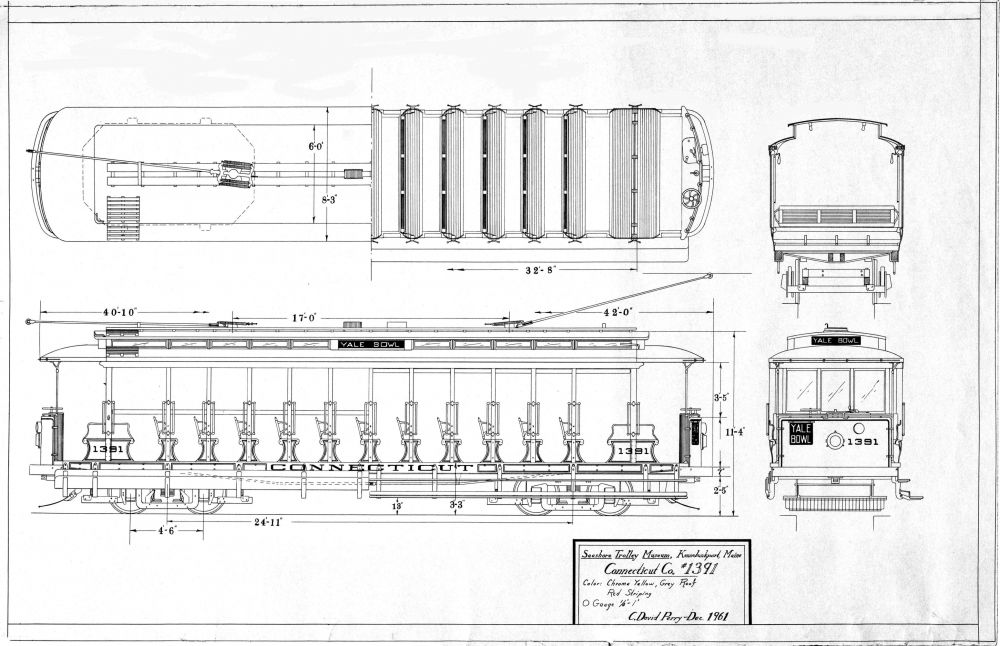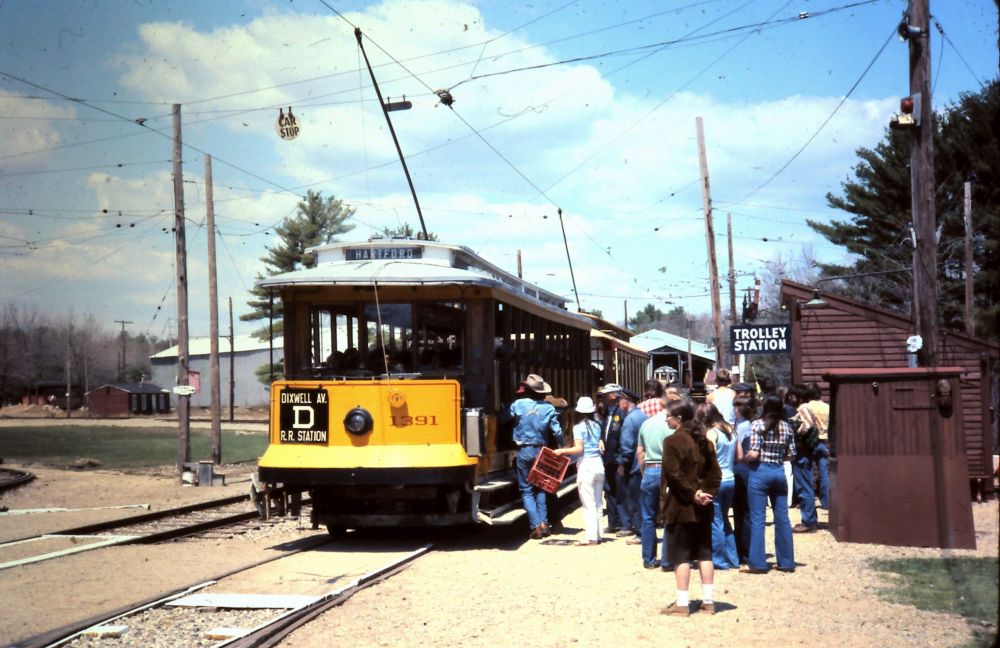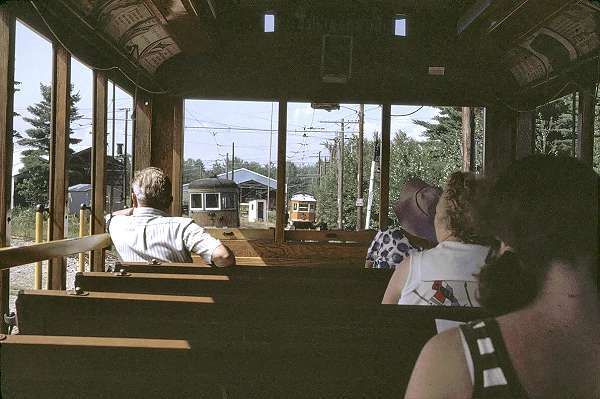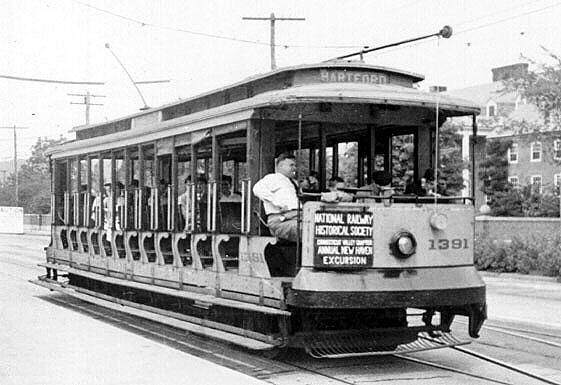
- Builder
- Osgood Bradley Car Co.
- Description
- 15 Bench open car
- Secondary Use
- None
- Type
- City and Suburban Streetcars
- Year
- 1910
- Retired from Service
- 1948
- Acquired by the Museum
- 1949
- Fund
- 643
Connecticut Company 1391
From New Haven, Connecticut
History
The Connecticut Company was formed in 1907 by consolidating operating companies in about eight cities in various parts of the state, including Torrington, Hartford, Middletown, Meriden, New Haven, New London, Norwich and Putnam. In addition, another large operator, the Connecticut Railway and Light Co., serving Stamford, Norwalk, Bridgeport, Ansonia-Derby, New Britain and Waterbury was leased. These fourteen cities formed the basis for thirteen operating divisions, each of which maintained its own roster of cars. The Connecticut Co. was owned by the New York New Haven & Hartford Railroad. In 1915, the company renumbered all of its cars into a single sequence. Cars from a single order assigned to various divisions were kept together numerically, with a few minor exceptions. For that reason, each of Seashore’s Connecticut Co. cars has had two numbers. No. 1391 is one of the last batch of open cars received by the Connecticut Co. in 1910 and 1911. Built by the Osgood-Bradley Car Co. these cars featured deck roofs, with rollsigns built into the sides and ends of the monitor. The order totaled 119 cars which were distributed to 8 different divisions. The smallest allotment, two cars, went to New Britain, where they were assigned numbers 317 and 319 in the even-odd system. In 1915 they were renumbered 1391 and 1392, and were shipped to New Haven in the 1920s, where they joined the Yale Bowl fleet.
Long after the Connecticut Co. withdrew open cars, such as No. 303/615, from regular service, the company used them in New Haven to shuttle football fans between the railroad station and the Yale Bowl on game days. The open cars also continued operating on excursions to the local beaches and on charter service including fan trips. The Yale service (along with the extra space to store the cars at the James Street Car Barn upper level) is, however, the reason these cars were not scrapped in the 1930s or earlier when many other systems scrapped their open cars. The last Yale Bowl open cars ran in the 1947 football season, and the last New Haven streetcar service ran on September 26, 1948. A number of these open cars were donated to museums.
After retirement, No. 1391 was first donated by the Connecticut Company and preserved by the Boston Chapter of the National Railway Historical Society which wished to operate it in Boston. Clearance issues prevented this, and No. 1391 was transferred to Seashore in 1949, replacing car 1253, which had burned in a fire at the museum. Since arriving in Maine, No. 1391 has been kept in the condition it was in when it was received with occasional painting, some restoration work and running maintenance. It operated regularly until the mid 1990s, when it was sidelined due to a wheel gage problem and an issue with one bolster. The car also has a tendency to rack and twist especially when lightly loaded. This car series (termed the 1400 series) was made cheaply near the end of the manufacture of open cars so were not as solidly built as their predecessors. The design allowed the car to twist in order to absorb some of the shock from riding on the rails. That has probably worsened some over the years but is not a major issue preventing the car from operating. In 1997, No. 1391 participated in the centennial celebration of the Boston subway system and was placed on display at Boston's South Station as Boston No. 1752, the first revenue streetcar to pass through the Tremont Street subway.
Technical Information
- Seats: 75
- Control: K-35G
- Brakes: Straight Air
- Compressor: DH-16
Trucks
- Number: 2
- Manufacturer: Standard
- Model: 0-50
Motor
- Number: 4
- Manufacturer: General Electric
- Model: 80
Weight and Dimensions
- Length: 42’
- Width: 10’ 8.00"
- Height: 12’ 2.00"
- Weight: 41000 lbs.
Additional Images

C. David Perry in Dec. 1961

Russell Monroe in May 1978

Vlad Kedrovsky in newdavesrailpix.com

Seashore Trolley Museum Postcard Collection – in New Haven CT on 6/1/47
© 1998 - 2025 New England Electric Railway Historical Society. All Rights Reserved.